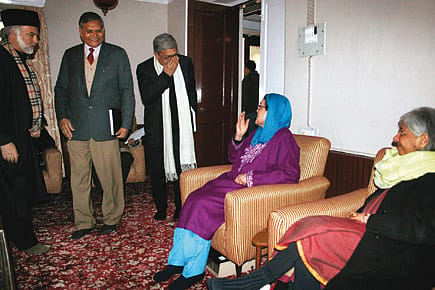The IIC Symbolism

It is raining autonomy reports in Kashmir. In a bid to make themselves relevant in the current turmoil, the three interlocutors appointed by New Delhi are meeting any political leader who is willing to meet them. On 21 December, the interlocutors met Begum Khalida Shah, president of the Awami National Conference, who presented them with her party’s report on greater autonomy. The group has said it has already received three other autonomy reports: one from the ruling National Conference, another from Mehbooba Mufti’s People’s Democratic Party (PDP) and the third from separatist leader Sajjad Lone who has authored a document called ‘Achievable Nationhood.’ This has already generated controversy, with the BJP alleging that the interlocutors were working on an anti-national agenda. BJP spokesperson for the state Ramesh Arora has alleged that after a meeting with PDP leader Mehbooba Mufti, one of the interlocutors Dilip Padgaonkar told Mufti that they considered the PDP’s document on self-rule the most viable solution. Apart from political leaders, the interlocutors have met other groups such as students and human rights bodies. The group is expected to submit its review report to the Home Ministry shortly. But, as of now, no tangible results are expected from whatever work they have done in the state. So far, the interlocutors don’t enjoy the confidence of prominent separatist leaders in the Kashmir Valley. A recent RTI application has revealed that each interlocutor is being paid a monthly salary of Rs 1.5 lakh, with the proposed provision of separate offices. Till their offices are established, the three can meet at Delhi’s elite India International Centre (IIC)—the expenses of which will be borne by the Home Ministry. This is at a time when thousands of students in the border town of Uri are being forced to attend classes in the open—in the Valley’s harsh winter—because school buildings were damaged in an earthquake five years ago. To date, the state government has been unable to rebuild these schools, owing first to inadequate funds and then to a fiasco involving the education department, teachers and the contractors of government agencies. In the Badgam district near Srinagar, the literacy rate is as low as 39 per cent as opposed to the state’s overall literacy rate of 70 per cent. Obviously, the IIC symbolism figures more prominently in New Delhi’s priorities than actual development in Kashmir.